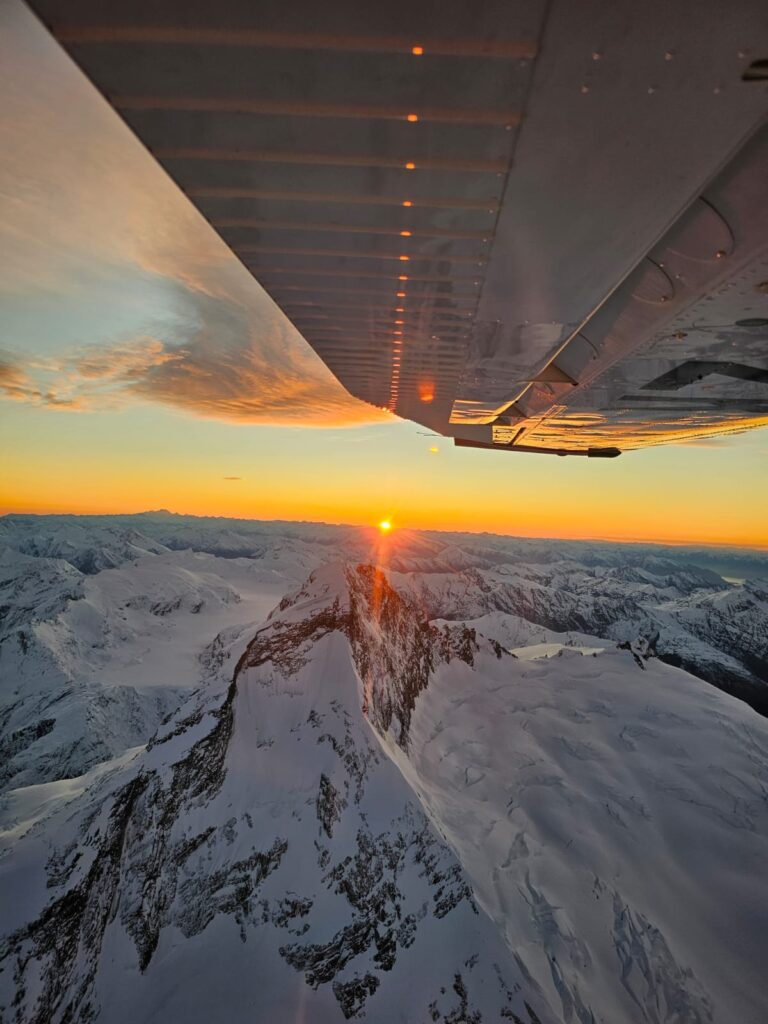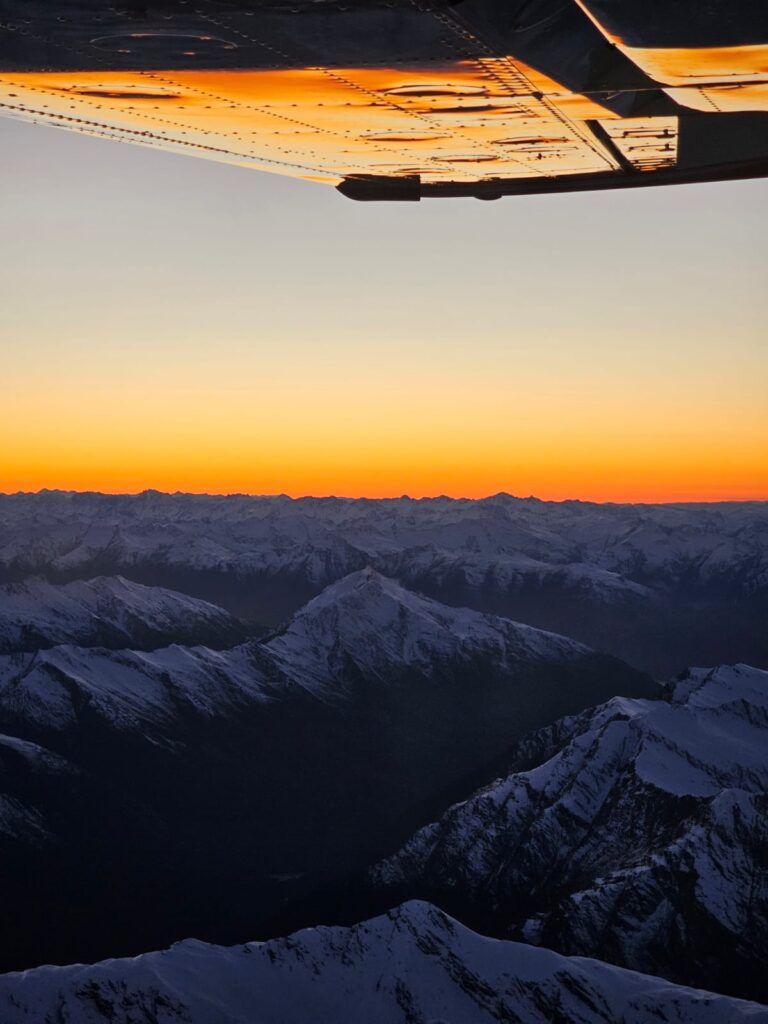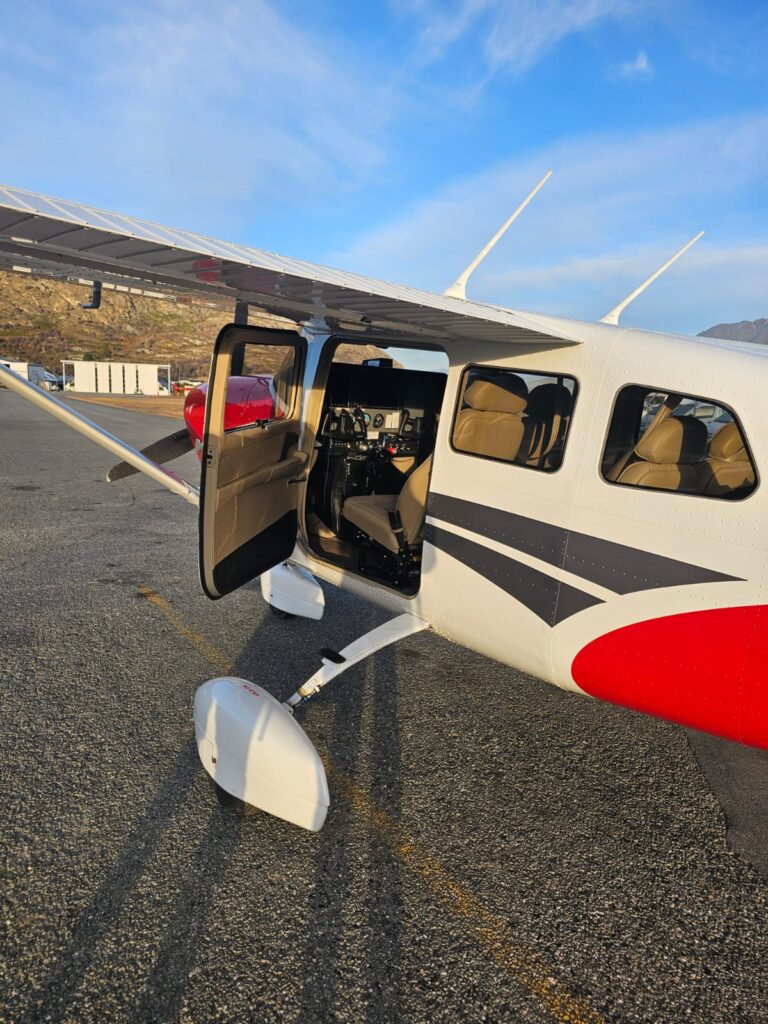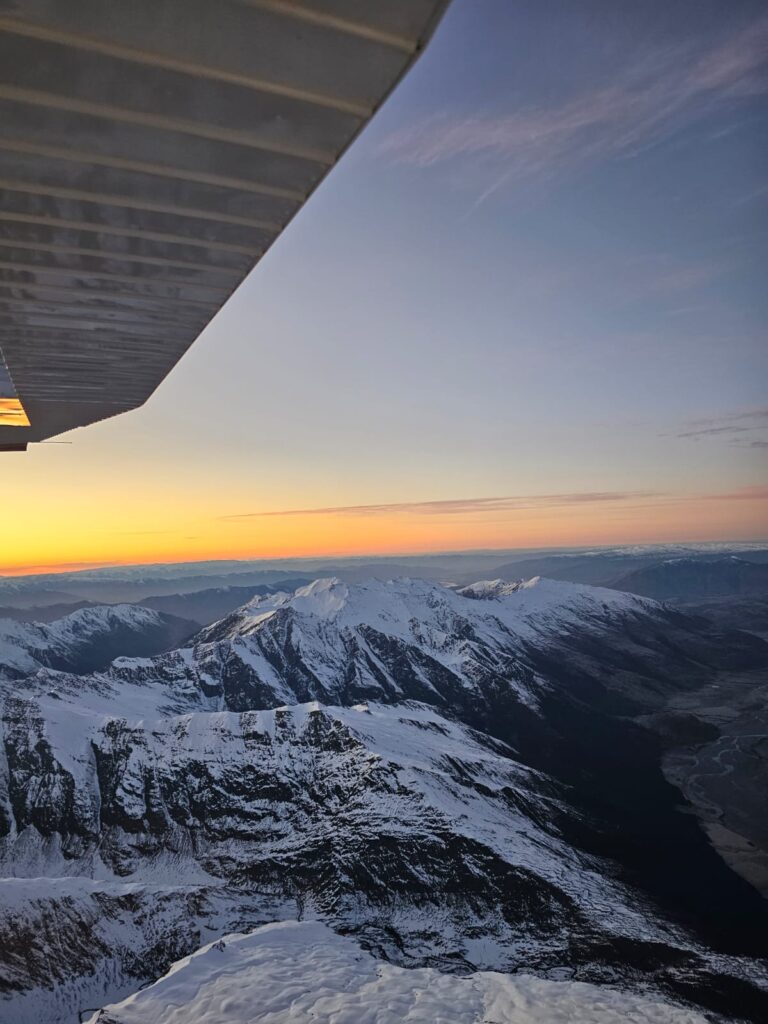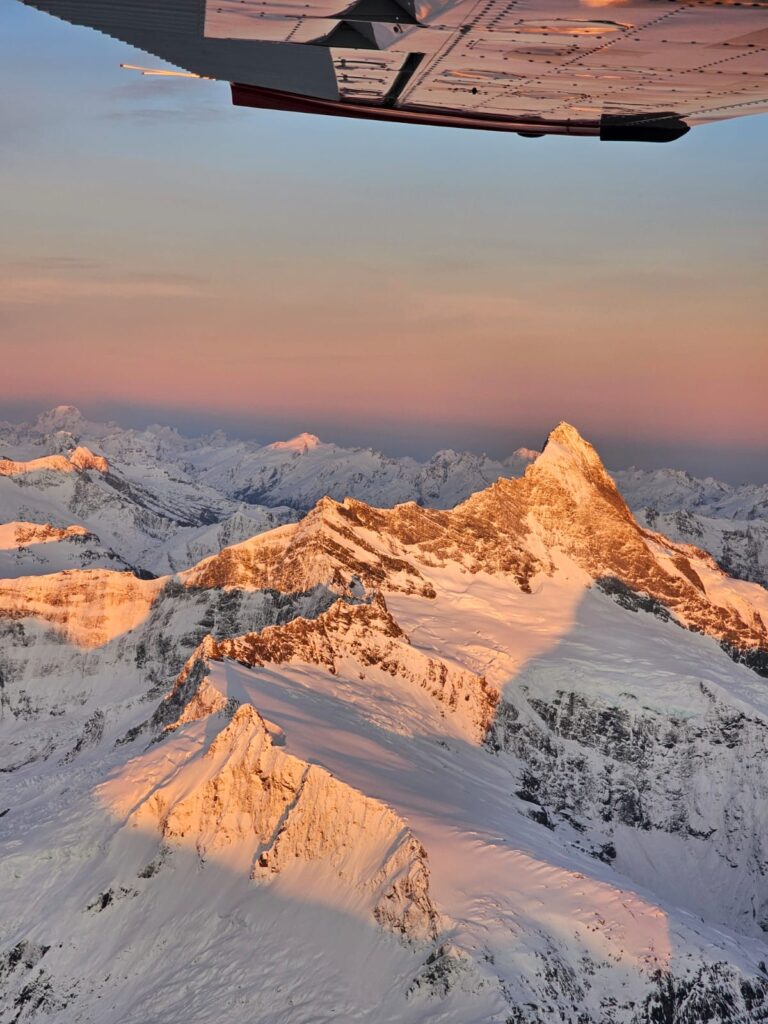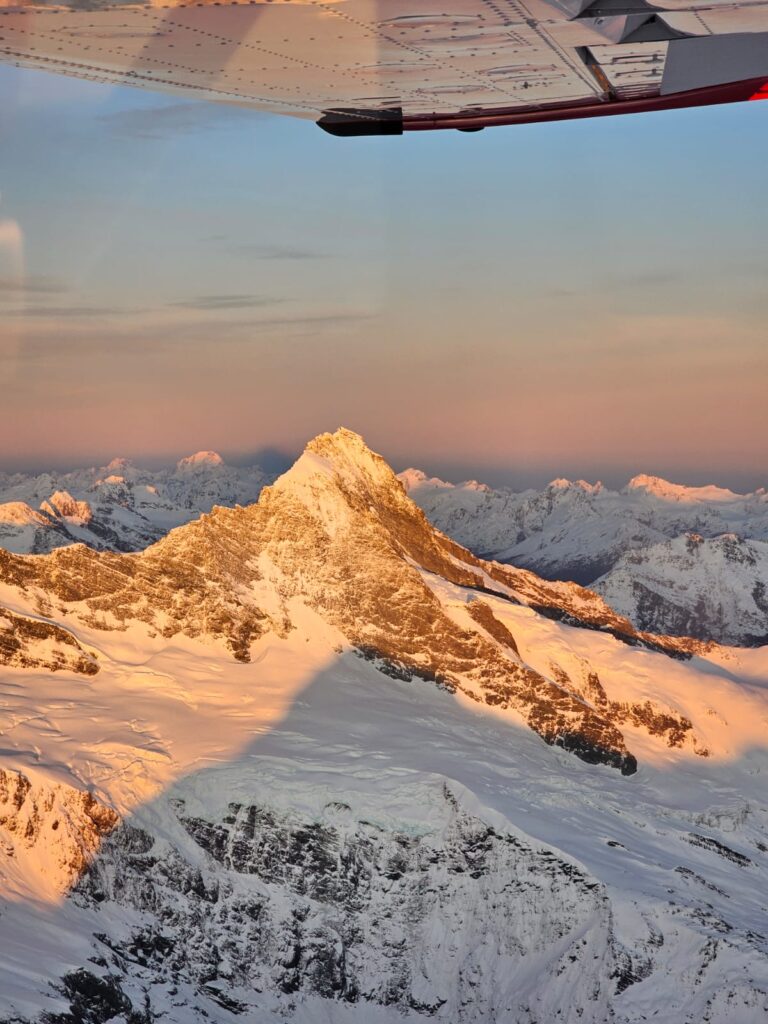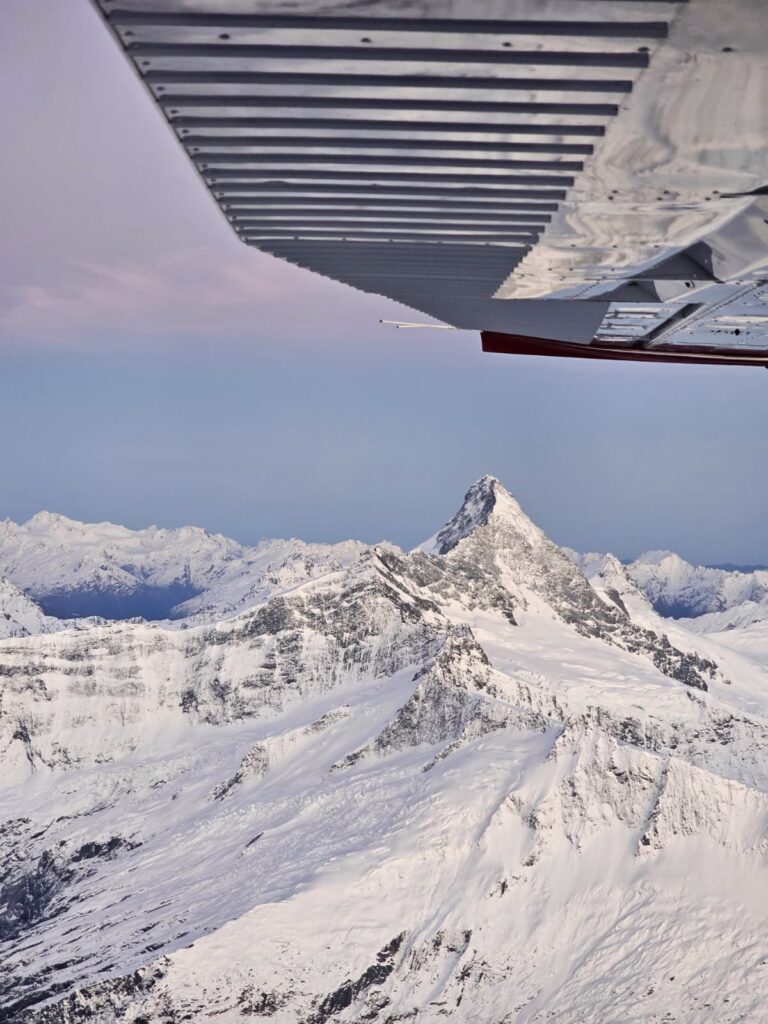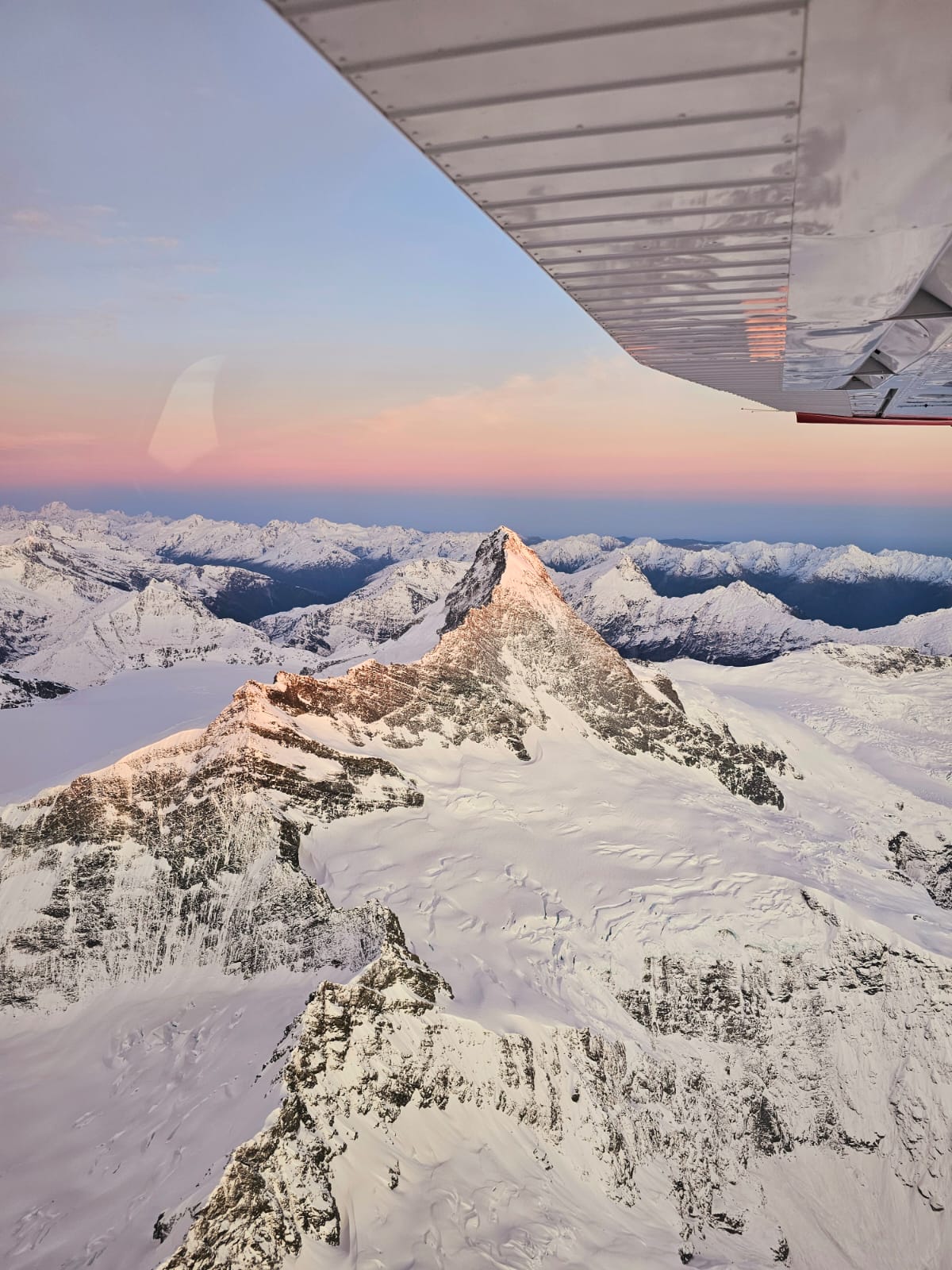Mt Aspiring National Park encompasses the southernmost section of New Zealand’s Southern Alps, flanked by Fiordland National Park to the west. It lies directly to the north of Glenorchy, with Queenstown and Wānaka on its west boundary. Named after its highest peak, Mt. Aspiring, the park spans 355,000 km of almost completely inaccessible mountains, valleys, alpine lakes, rivers, and glaciers. Selected peripheral parts of the park can be accessed by road, for example, the start of the Routeburn Track (part of New Zealand’s great walk system) in Glenorchy. However, the rest of this untamed paradise is only accessible by boat, plane, or foot.
Mt Aspiring is a wild playground for the alpine hiker. The bulk of these adventures are multi-day hikes and require advanced alpine skills and equipment. The most well-known of these hikes are Routeburn, Gillespies Pass, Crucible Lake, and Brewster Hut. Brewster Hut is a serviced alpine lodge, which is a place of respite on the route to Brewster Glacier. It is a 3-hour hike to the hut and a further 2 hours to the glacier. But this distance from the valley floor only attests to how unworldly Brewster Glacier’s beauty is. As you emerge out of the treeline and step onto the glacier, you enter an ethereal landscape unburdened by the human influences of the ground below. It is a natural and far-removed wonder. At least this is the impression I’ve derived from others photography and a glimpse from our flight. We do not plan to complete the hike until this summer since it is a treacherous feat in winter. But I can already picture in my mind’s eye its transcendental tranquillity.
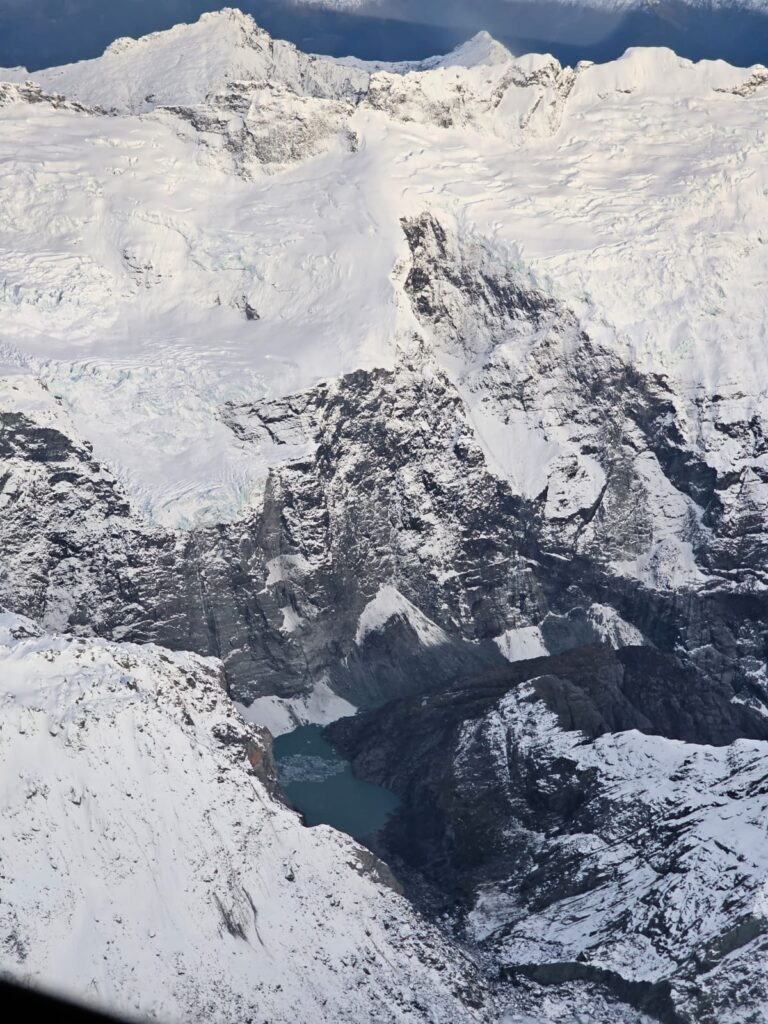
We also plan to complete part of the Routeburn Track in the coming months. It is a track that crosses the territory of both Mt Aspiring and Fiordland national parks. Along the route you venture into Sugarloaf Pass, traverse Harris Saddle, and meander across valley floors to Lake Mackenzie. It is a multi-day hike with several serviced huts and campsites. This hike provides an opportunity to embark into the otherwise inaccessible native forest and wild terrain of Mt Aspiring, providing the true New Zealand experience. Mt Aspiring’s natural wonders are also made accessible through the Rob Roy glacier track, which is a short drive from neighbouring Wānaka and provides views of glacial ice from the valley floor.
Mt. Aspiring National Park, from a bird’s-eye view, pictures rows of stunning mountains as far as the eye can see. It is a wonderland of peaks and valleys, a beautiful byproduct of glacial ice and climate change over millennia. Olivine Ice Plateau is a glacier that manifests as a flat plateau on one of the mountaintops. Carved by glacial ice and blanketed in a thick sheet of snow, the plateau is a snowy playground for the professional alpine hiker. The Bonar glacier on Mt. French can also be climbed too. But these incredibly remote sights are unfortunately reserved for those with advanced backcountry hiking skills. That is of course, unless you charter a flight.
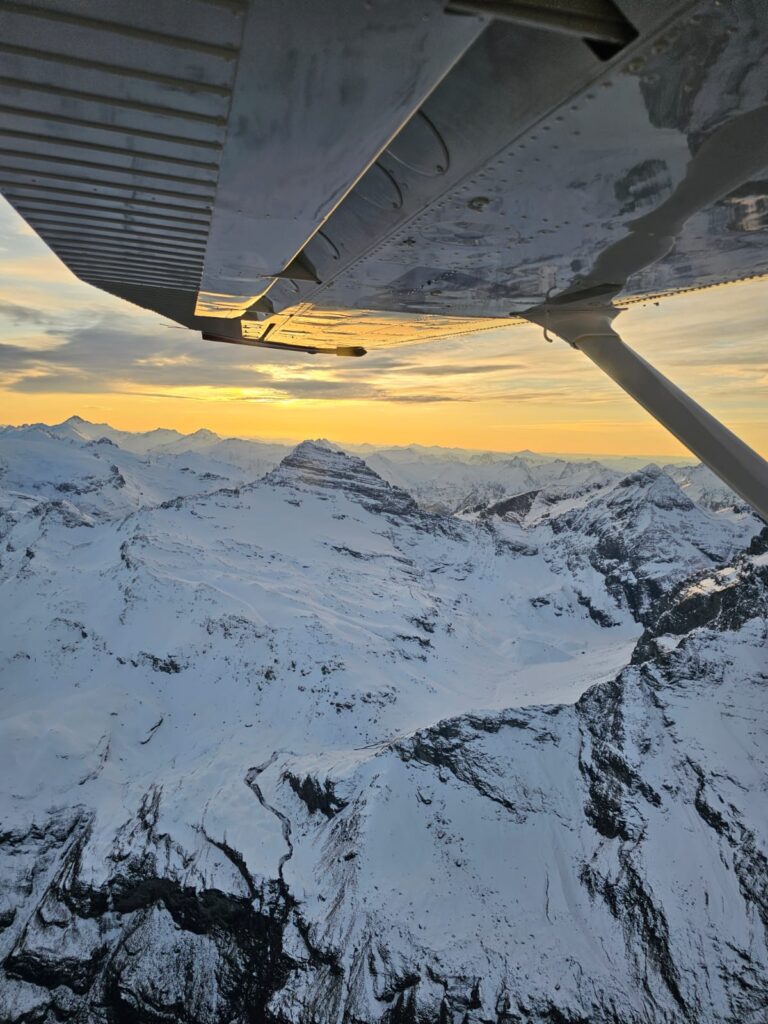
We booked a charter flight with Glenorchy Air, a Queenstown-based company, for sunrise over Mt. Aspiring National Park. We promptly met our pilot at Queenstown airport at 6 am and discovered we were going in a four-seat plane exclusively with our pilot. Buckled up and headphones on, we set off in complete darkness. As we made our ascent, we passed directly above Coronet Peak, a ski field above Queenstown, lit up in lamplight. We shortly crossed Lake Wakatipu and entered the dominion of the Southern Alps.
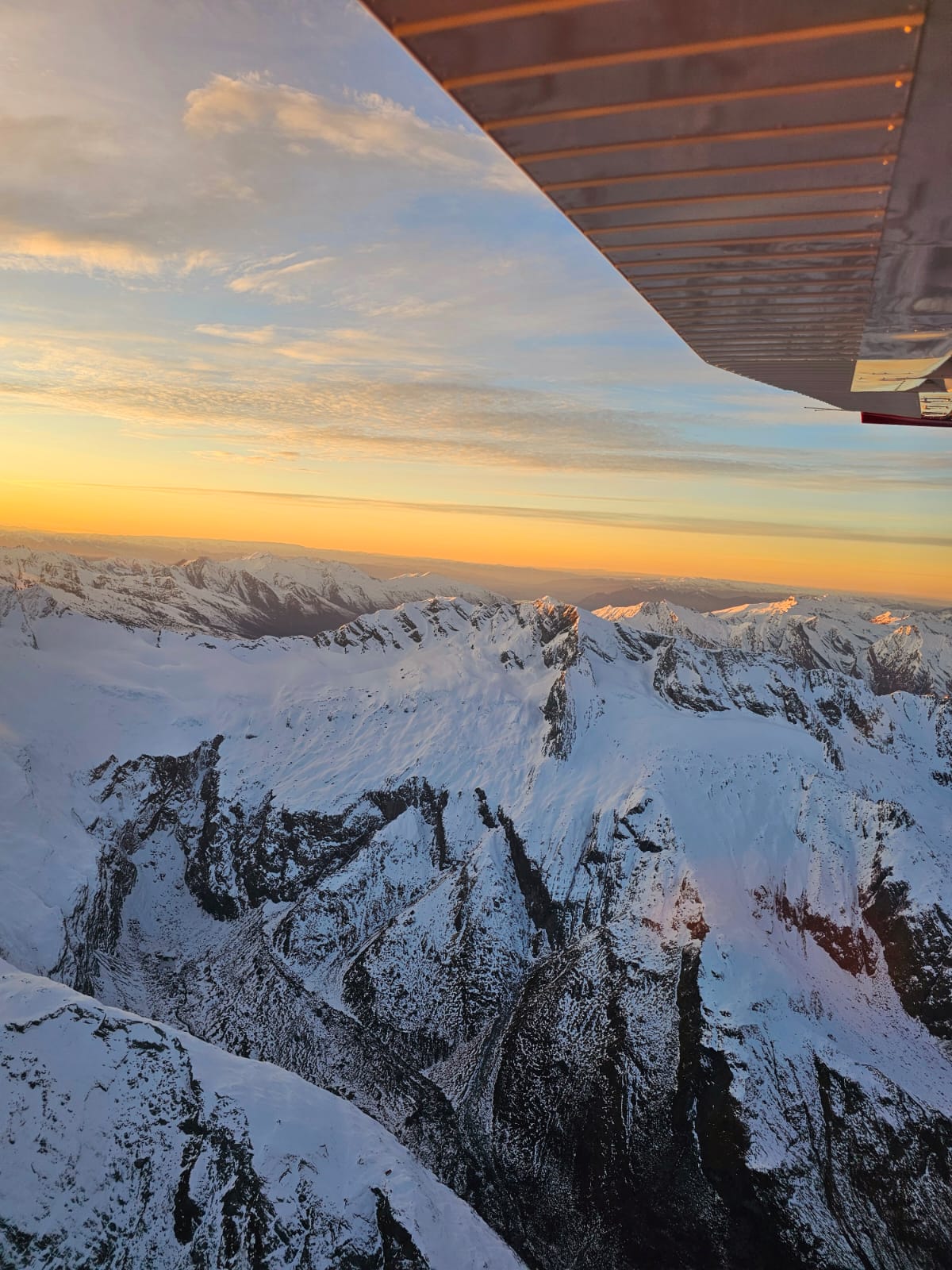
This is a flight that is only operated in the winter months, so the mountainscapes were entirely covered in snow. The sunrise filtered in gradually in stages; first, the sky was a deep blue highlighted with vibrant orange. Then as the sun came over the horizon, oranges turned red. Then as the sky lightened into a powder blue, orange and red dissolved into pastel yellow. We circled multiple times around the summit of Mt. Aspiring, identifiable by its conical shape, to watch the light change. Mt. Aspiring is the second largest mountain in New Zealand, so its unobstructed summit was hit beautifully by the morning sunlight. This sun-kissed section was bathed in a gold-pink hue, while the sky behind it had also faded into a baby pink. The entire contents of an artist’s palette painted the sky that morning; we were extremely lucky to choose a day with barely a cloud in the sky.

Mt. Aspiring National Park from the air was a sight so beautiful it was almost imperceptible. The sheer number of mountains, which are stunning alone and unfathomable together, means the average tourist can only scratch the surface of the park. It would take a dozen flights at least to really drink in all the details. Each peak you begin to focus on, you are then met with another and another and another. I can imagine only our tour guide, who has been flying over Mt. Aspiring for decades, can truly appreciate how beautiful the park is. But I am incredibly grateful to have gotten a glimpse.
